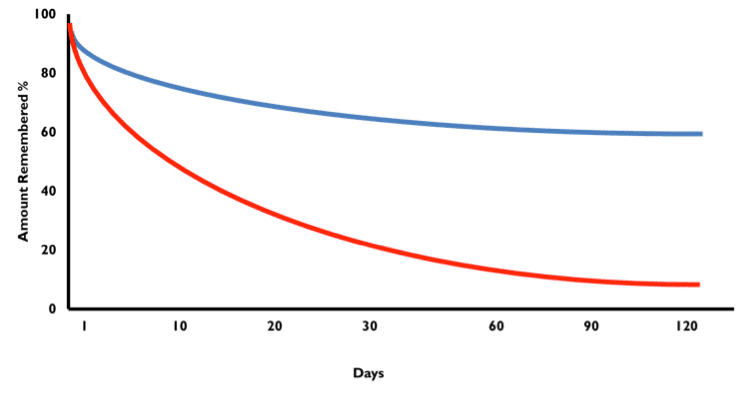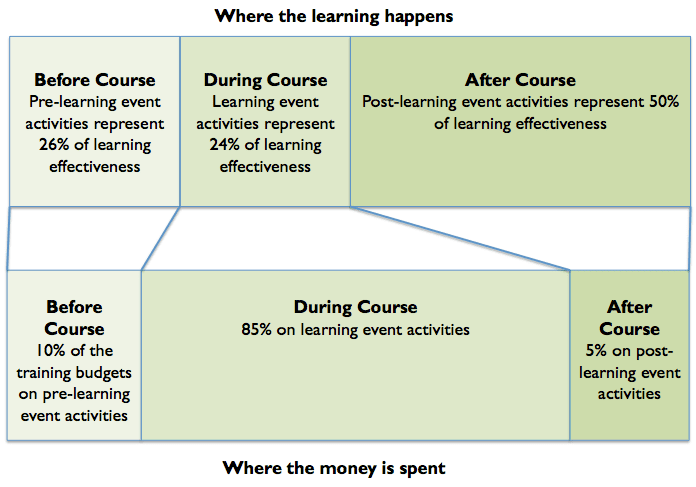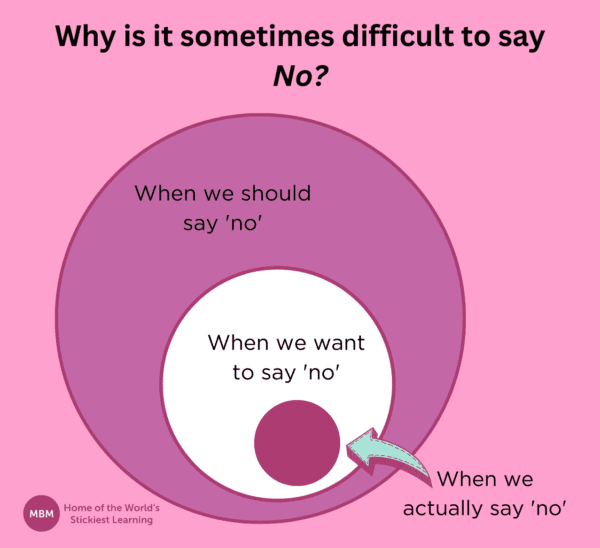There is a huge difference between what science knows and what business does, when companies train their people.
This is why HR Directors, HR Managers, L and D Managers and Sales and Marketing Directors need to ‘Say No to One Day Training Courses’. These 3 reasons explain more:
1. Less Than 42 Minutes Remembered
What science knows is that we forget at least 80% of what we have learnt, after 30 days. A German psychologist, named Hermann Ebbinghaus, created the ‘Forgetting Curve’ in around 1850. His research said that we forget over time.
More importantly, he identified how much we forget, when we forget it and how to not forget as much. The latter part he called ‘spaced repetition’ and was about re-learning regularly. Learning what you had learnt, not just as a one-off.
What business does is to predominantly send their employees on one day training courses. Add to this no ‘spaced repetition’, i.e. no re-learning after the one day training course, and 80% of what has been learnt, is lost after 30 days. This means that for a one day training course of 7 hours, after 30 days the Learner has retained 84 minutes worth. And less than 42 minutes after 3 months.
Action: Ask your training provider these 7 key questions.

2. Companies Wasting 61% of their Budget
What science knows is that ‘after the course’ learning activities represent 50% of learning effectiveness. According to an article by Dr. Brent Peterson of Columbia University, his conclusion was that ‘before the course’ accounts for 26% of the learning effectiveness, ‘during the course’ accounted for 24% of the learning effectiveness and ‘after the course’ was 50%.
What business does is spend 10% of its training budget on before the course learning activities, 85% on during the course learning activities, and 5% on after the course learning activities. For the majority of one day training courses, the ‘after the course’ learning activity is an open invite to contact the training provider if they need help, which most learners never do, and possibly a quick chat with their line manager about how the course went, which is largely a comment around how bad the lunch was.

3. Learning Goals are Rarely Set
What science knows is that if we do not set goals, we are not motivated to achieve them because we do not know what we are aiming for. Dr Locke, from the University of Maryland, carried out research on goal setting and found that, ‘…MBA students who set specific difficult learning goals (e.g., learn to network, master specific course subject matter) subsequently had higher scores and higher satisfaction with their MBA program, than did people who simply set a long-term performance goal …’.
What business does is, in the majority of cases, is not agree a learning objective with the Learner. So many times trainers ask the group at the start of the day, ‘Why are you here?’, and so often the answer is, ‘My boss sent me’. In business, KPI’s and KRA’s are agreed upon because without them the company would fail. Yet, on training, it seems that so many line managers are ok to tick the box of training. The approach that achieves the highest return on investment is to agree what is needed from the training.

At MBM we do not offer our prospects one-day training courses. Our training programmes are built on our unique Sticky Learning training method, consisting of a ‘Learning To Learn‘ course, a 1 day foundation course, a 1-day advanced course after 6 months, with plenty of engagement during the 6 months of ‘spaced repetition’.
Action: Take a look at the Chain of Evidence you could have for each of your training courses, showing 5 levels.




